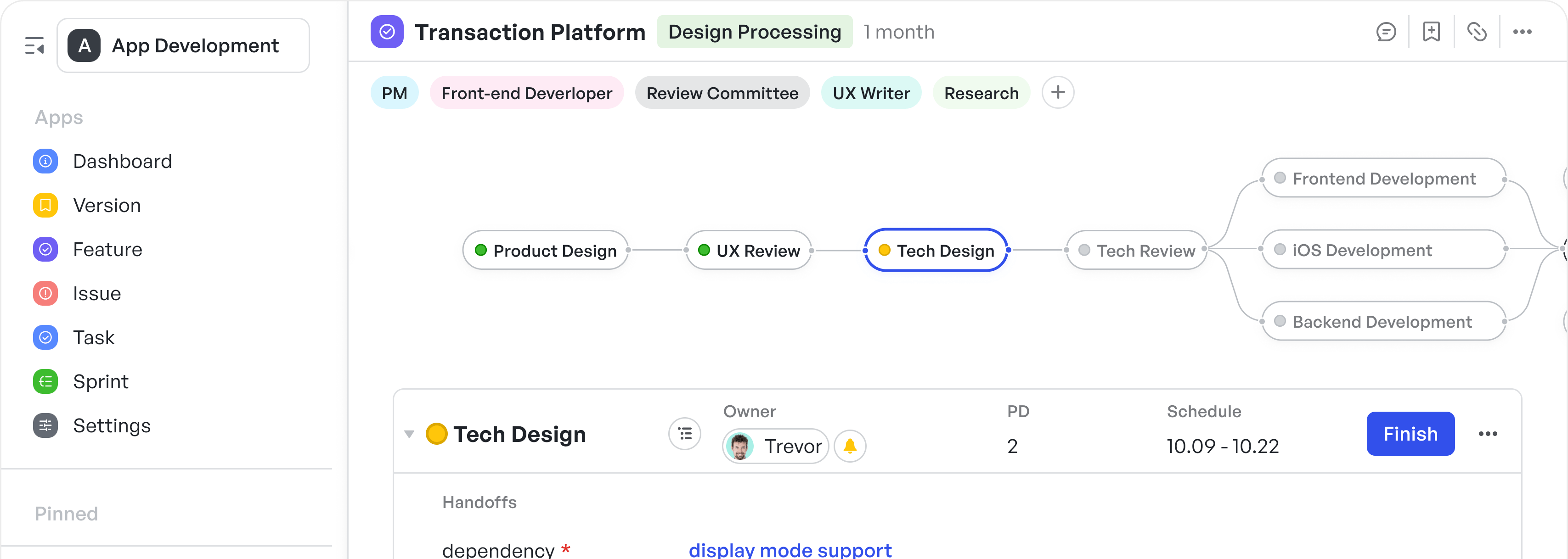Introduction
Granularity is a term that finds its significance in the meticulous world of project management. It pertains to the level of detail that is broken down for each component of a project—be it tasks, subcomponents, or overarching milestones. The depth of your project's granularity can have profound implications on its execution, effectiveness, and eventual success. In this exploration, we will delve into the essence of what defines granularity, understand its nuanced importance, and unlock strategies to manage it with finesse, ensuring your project triumphs with flying colors.
The Benefits of Proper Granularity
Proper granularity acts as a powerful orchestrator within project management, ensuring harmony between vision and execution. By delving into how granularity facilitates each function of the project process, it's apparent that managing it with expertise is not merely a detail to be observed but a fundamental practice to be mastered.
Example & Free Template
Illuminating Project Pathways
Granularity in project management acts as a beacon, casting light on the intricacies of a project's course. When properly executed, it delineates every segment of the project journey, enabling teams to have a clear understanding of their individual and collective responsibilities. This granular roadmap is pivotal for navigating complex projects, especially when multiple stakeholders and diverse skill sets are involved.
Streamlined Task Delegation
The correctly calibrated granularity allows for the effective breakdown of tasks, fostering a climate where work is allocated based on expertise and availability. This enhances the potential for quality outcomes, as each team member is accorded a detailed set of expectations and deliverables. Such strategic partitioning underlines the importance of every contribution and underscores the centrality of detailed planning for project success.
250px|700px|reset
加载中,请稍后
Enhanced Monitoring and Progress Tracking
A well-granulated project translates into an observable dashboard of progress and performance. Project managers can track the advancement of the project at various levels of detail, adjusting resources and timelines as and when needed. Real-time tracking means potential issues can be identified swiftly, allowing for quick course correction - an essential dynamic for maintaining project momentum and preventing derailment.
250px|700px|reset
加载中,请稍后
Improved Risk Management
Granularity enhances the ability to foresee risks and prepare contingency plans. It ensures that each segment of the project is scrutinized for potential pitfalls, and appropriate risk mitigation strategies are put in place. This proactive stance on risk management is only possible when tasks and dependencies are identified and managed with the right degree of granularity.
Challenges of Granularity in Project Management
The dangers of too much detail can be as detrimental as too little, reducing productivity and miring teams in unnecessary complexity. Thus, challenges like analysis paralysis, risk of micromanagement, increased administrative overhead, over-planning, and loss of flexibility must be meticulously balanced against the benefits. In the next section, we will explore best practices that address these challenges, ensuring that granularity serves as a tool for success rather than an obstacle.
The Overwhelm of Microscopic Detail
While attention to detail is championed in project management, there is a threshold beyond which the granularity can become paralyzing. Excessive detail might bog down teams in the minutiae—each minor aspect of a project becoming a vortex of time and effort that could be better spent on higher-level objectives. Analysts and team members may find themselves scrutinizing needle-like issues in a haystack of tasks, leading to 'analysis paralysis,' where the decision-making process is stalled due to an over-abundance of choice and data.
The Pitfalls of Micromanagement
In projects with too fine a level of granularity, project managers may inadvertently slip into micromanagement—overseeing every tiny task to the extent that it stifles team autonomy and creativity. This approach can erode trust, hinder team members' ability to take initiative, and ultimately deflate team morale. Moreover, it shifts focus from strategic objectives to tactical minutiae, undercutting broader project goals.
250px|700px|reset
加载中,请稍后
Navigating Administrative Complexity
With detailed granularity comes the rise of administrative tasks, often proportional to the number of granular elements within a project. This can lead to an increase in the ‘Red Tape’ of project management—documentation, approvals, status updates—which in turn adds to the administrative burden. The corresponding complexity can obscure instead of clarify, diminishing the efficiency that proper granularity aims to enhance.
The Perils of Over-Planning
In projects where every possible scenario has been scrutinized, granularity can lead to an exhaustive and cumbersome planning phase, often at the expense of execution. Over-planning can delay the project's start and insidiously eat into time frames set for project milestones, ensuing deadline pressures that could have been avoided.
Flexibility and Responsiveness Compromise
Highly detailed plans might lead to inflexibility, where adapting to changes becomes more cumbersome due to the sheer number of details that need revising. In an age where agility and adaptability are paramount, overly granular projects can struggle to pivot, potentially rendering them less competitive and innovative.
Techniques and Tools for Managing Granularity of Projects
- Work Breakdown Structure (WBS):
This is a cornerstone project management technique where the project is broken down into smaller, more manageable pieces. By creating a WBS, you can define the project's granularity by establishing levels of detail that serve the project's needs.
250px|700px|reset
加载中,请稍后
- Milestones:
Setting clear milestones helps manage granularity by identifying significant points in a project timeline that matter most to stakeholders, without being too granular.
- Iterative Planning:
Using agile methodologies, this technique allows for adjustments at regular intervals, managing granularity on the fly, based on the most current project conditions and outcomes.
- Progressive Elaboration:
This involves gradually increasing the level of detail in project planning as more information becomes available, allowing for refining the granularity as you go.
Setting up proper granularity in Meegle
- Project Hierarchy: Start by establishing a project hierarchy that categorizes your work into goals, epics, features, and issues. This hierarchy allows you to manage the project at different levels of granularity and ensures that all tasks align with larger objectives.
250px|700px|reset
加载中,请稍后
250px|700px|reset
加载中,请稍后
- Task Dependencies and Prioritization: Use Meegle to set dependencies between tasks and prioritize them. This helps in managing the flow of work and ensures that team members focus on the right tasks at the right time.
250px|700px|reset
加载中,请稍后
(Decompose the standard project process into nodes and add subtasks to the nodes)
- Custom Fields and Labels: Utilize custom fields and labels to add specific details that are important for your project's context. This additional information helps to increase or decrease the granularity based on the needs of stakeholders.
250px|700px|reset
加载中,请稍后
Training and Knowledge Sharing
- Project Management Institute (PMI) PMI offers various articles, white papers, and courses, which often cover the topic of project task breakdown and granularity. You can look for specific resources on their website based on the "Work Breakdown Structure (WBS)" which is a key principle related to granularity.
- Coursera Search for project management courses on Coursera that will often cover the concepts of task breakdown and granularity. Courses such as "Project Management Principles and Practices" will include relevant modules.
- Lynda.com - Now known as LinkedIn Learning, offers a range of project management training videos and tutorials which can give you a more granular understanding of granularity itself.
- MindTools.com - Offers a variety of resources and articles on project management, including tools and templates for implementing effective granularity in your projects through task delegation and milestone development.
- GanttPRO Blog - Contains multiple articles and tips on creating Gantt charts and work breakdown structures that heavily relate to project granularity.





